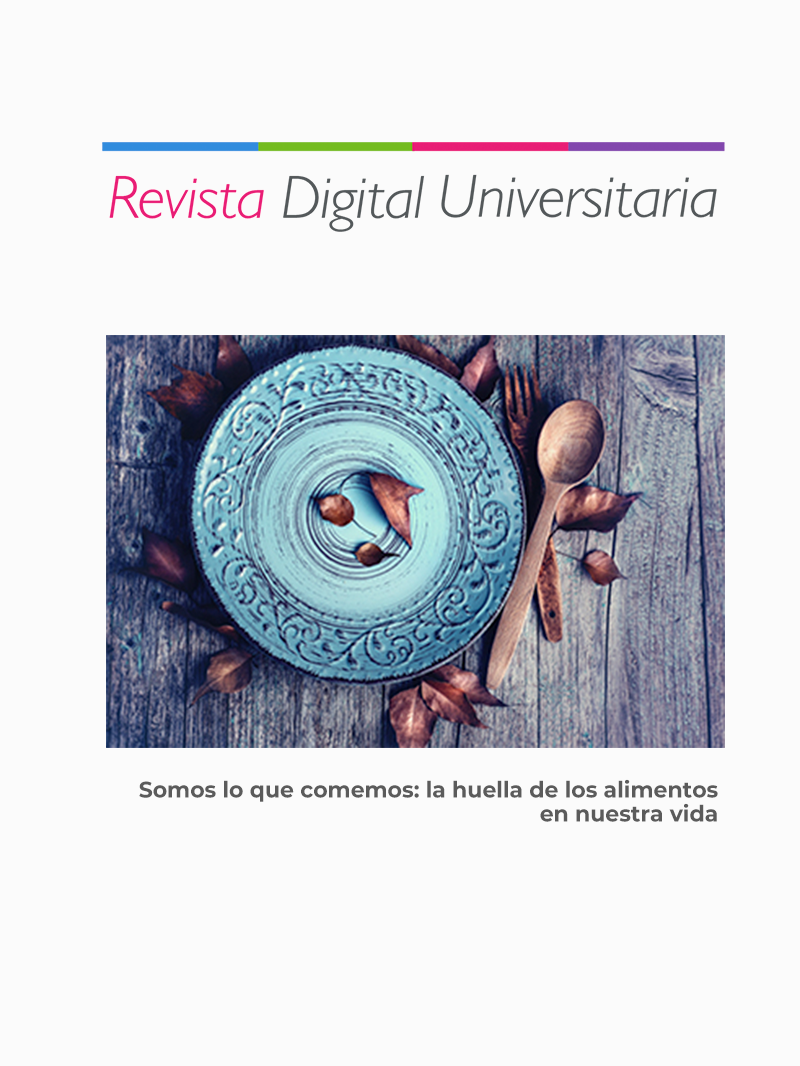From taco stand to human body: your food’s journey
DOI:
https://doi.org/10.22201/ceide.16076079e.2024.25.4.1Keywords:
food, sugars and fats, physiology, obesity, microbiotaAbstract
“You are what you eat” is a popular saying we associate with the social and cultural aspects of food. In this article, we explore this saying in biological terms. First, we describe how the main macronutrients in food —carbohydrates, lipids, and proteins— are digested and transported to become part of our bodies. Next, we discuss how nutrients modify the body’s functioning. Finally, the repercussions that nutrients have on obesity are addressed.
References
Arcego, D. M., Krolow, R., Lampert, C., Toniazzo, A. P., Garcia, E. D. S., Lazzaretti, C., Costa, G., Scorza, C., y Dalmaz, C. (2020). Chronic high-fat diet affects food-motivated behavior and hedonic systems in the nucleus accumbens of male rats. Appetite, 153, 104739. https://doi.org/10.1016/j.appet.2020.104739
Davidenko, O., Darcel, N., Fromentin, G., y Tomé, D. (2013). Control of protein and energy intake - brain mechanisms. European Journal of Clinical Nutrition, 67(5), 455–461. https://doi.org/10.1038/ejcn.2013.73
DiFeliceantonio, A. G., Coppin, G., Rigoux, L., Thanarajah, S. E., Dagher, A., Tittgemeyer, M., y Small, D. M. (2018). Supra-Additive Effects of Combining Fat and Carbohydrate on Food Reward. Cell Metabolism, 28, 33-44. https://doi.org/10.1016/j.cmet.2018.05.018
Guyton, A., y Hall, J. (2011). Tratado de fisiología médica. (12.a ed., pp. 809-875). Elsevier.
Hall, K. D. (2018). Did the Food Environment Cause the Obesity Epidemic? Obesity, 26, 11-13. https://doi.org/10.1002/oby.22073
Hou, K., Wu, Z.-X., Chen, X.-Y., Wang, J.-Q., Zhang, D., Xiao, C., Zhu, D., Koya, J. B., Wei, L., Li, J., y Chen, Z.-S. (2022). Microbiota in health and diseases. Signal Transduction and Targeted Therapy, 7, 135. https://doi.org/10.1038/s41392-022-00974-4
Johnston, C. S., Day, C. S., y Swan, P. D. (2002). Postprandial thermogenesis is increased 100% on a high-protein, low-fat diet versus a high-carbohydrate, low-fat diet in healthy, young women. Journal of the American College of Nutrition, 21(1), 55-61. https://doi.org/10.1080/07315724.2002.10719194
Loper, H., Leinen, M., Bassoff, L., Sample, J., Romero-Ortega, M., Gustafson, K. J., Taylor, D. M., y Schiefer, M. A. (2021). Both high fat and high carbohydrate diets impair vagus nerve signaling of satiety. Scientific reports, 11(1), 10394. https://doi.org/10.1038/s41598-021-89465-0
McDougle M., de Araujo, A., Singh, A., Yang, M., Braga, I., Paille, V., Mendez-Hernandez, R., Vergara, M., Woodie, L.N., Gour, A., Sharma, A., Urs, N., Warren, B., y de Lartigue, G. (2024). Separate gut-brain circuits for fat and sugar reinforcement combine to promote overeating. Cell Metabolism, 36(2), 393-407.e7. https://doi.org/10.1016/j.cmet.2023.12.014
Morais, L. H., Schreiber, H. L., y Mazmanian, S. K. (2021). The gut microbiota-brain axis in behaviour and brain disorders. Nature Reviews Microbiology, 19(4), 241–255. https://doi.org/10.1038/s41579-020-00460-0
Myers, M. G., Jr, Affinati, A. H., Richardson, N., y Schwartz, M. W. (2021). Central nervous system regulation of organismal energy and glucose homeostasis. Nature metabolism, 3(6), 737–750. https://doi.org/10.1038/s42255-021-00408-5
Oliphant K.,y Allen-Vercoe E. (2019). Macronutrient metabolism by the human gut microbiome: major fermentation by-products and their impact on host health. Microbiome, 7(1), 91. https://doi.org/10.1186/s40168-019-0704-8
Rautmann, A. W., y de La Serre, C. B. (2021). Microbiota’s Role in Diet-Driven Alterations in Food Intake: Satiety, Energy Balance, and Reward. Nutrients, 13(9), 3067. https://doi.org/10.3390/nu13093067
Rossi, M. A., y Stuber, G. D. (2018). Overlapping Brain Circuits for Homeostatic and Hedonic Feeding. Cell metabolism, 27(1), 42–56. https://doi.org/10.1016/j.cmet.2017.09.021
Published
Issue
Section
License
Copyright (c) 2024 Revista Digital Universitaria

This work is licensed under a Creative Commons Attribution-NonCommercial-ShareAlike 4.0 International License.

Revista Digital Universitaria es editada por la Universidad Nacional Autónoma de México se distribuye bajo una Licencia Creative Commons Atribución-NoComercial 4.0 Internacional. Basada en una obra en http://revista.unam.mx/.






